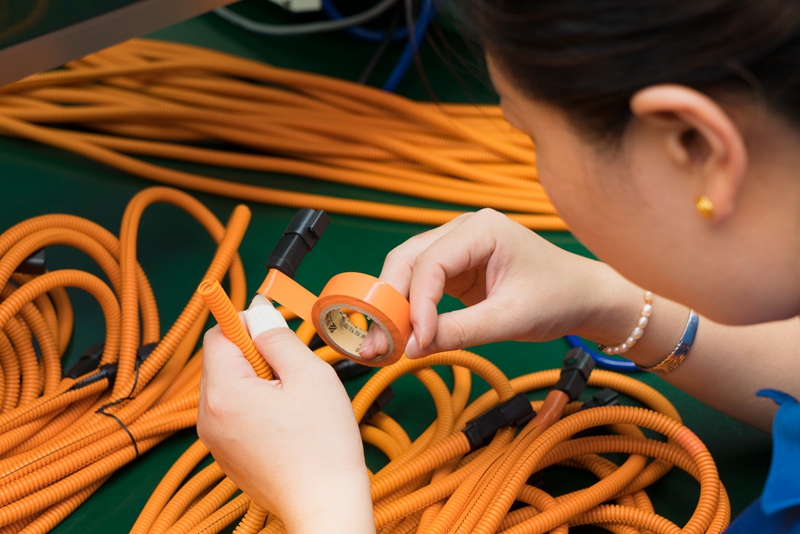2018 will be a crucial year for the Internet of Things. It is estimated that there will be 2.8 billion new devices connected to the Internet, thus realizing the various scenes that appeared in science fiction a decade ago. Connected medical devices, watches, home automation equipment, smart cities, smart cars and industrial equipment, etc., will change the way people and people interact with the environment, both in the personal and commercial fields.
It is now the best time to reflect on our mistakes in the past and is determined to do better in the future. My first consideration is security. It's easy for us to immerse ourselves in the new things that the Internet of Things brings, but we can't ignore the security risks posed by the Internet of Things.
More than a year ago, Mirai malware controlled hundreds of thousands of IoT devices and launched one of the largest and most devastating cyber attacks. According to Webroot: "The fundamental problem is that IoT manufacturers only focus on the capabilities of the device and have not invested enough in security testing."
So, I think everyone should make this decision in the coming year: make security a part of the IoT design process! But what does this mean? This article focuses on some of the issues that need to be considered from the start.

1. Does the device perform security-sensitive operations?
If a hacker can control the actuator signal of an insulin pump or a nuclear power plant valve controller, then this obviously poses a huge safety problem. Even the less critical equipment that controls the thermostat is a safety issue during the cold winter months. Conversely, controlling your robotic vacuum cleaner may not have a major impact.
Safety is more important than everything else. Whether the equipment is involved in a safety hazard will be an important factor in considering which strength safety measures you are considering.
2. Does the device handle sensitive information?
Any kind of privacy-sensitive information should be taken seriously, especially in Europe, the implementation of GDPR regulations, if these data are not handled properly, will be subject to significant penalties. Sensitive information is not just about personal information, but financial data, login credentials, telemetry, and configuration all need to be carefully protected.
When designing a product, ask yourself what happens if a hacker gets the data. If you think this is unacceptable, then you should consider using password encryption to handle the data in storage and transfer.
3. Does your device require secure authentication?
It's worth noting that only authorized IoT devices can join your IoT ecosystem!
Think about it, what happens if a hacker's device can pretend to be a car sensor and trigger some autopilot car control system behavior? What happens if the insulin pump receives a reading from a fake blood glucose sensor? In a security-sensitive situation, verifying the identity of an IoT device is critical.
Encrypted security identities provide devices with powerful authorization and are suitable for multiple scenarios to ensure that all devices in the IoT ecosystem are trusted.
4. Is the encryption method you are implementing right now?
For data protection, secure communication, and authentication, cryptography is a forward-looking technology that is difficult to implement and deploy correctly. Encryption will protect the data, but you must also protect the key.
One of the hallmarks of the Internet of Things is that these devices are often in a physically uncontrolled environment, giving hackers a greater chance of directly accessing the device, so it is easier to reverse engineer the device to find the key. Protecting the key may require installing a special hardware secure storage key on the device, and if not, white box encryption is required.
You also need to consider the entire lifecycle of key management. How is the key generated and distributed? Keys are usually generated on unprotected computers, and private keys are not adequately protected or backed up, creating serious security holes. Properly generating and distributing keys requires specialized technologies, facilities, processes, and people. If these features are not possible by your own business, you may need to outsource services for key generation and configuration.
5. How do you protect applications on IoT devices?
You should consider protecting your application as part of the development lifecycle. Many tools can be used to analyze code to find potential vulnerabilities that you should patch before deploying the code to the site.
Of course, new vulnerabilities are constantly being discovered, and you should have some ways to securely update these devices after deployment. Consider using a secure authentication channel when deploying patches to devices and using code signing techniques to ensure that only authorized updates are installed.
Deploying IoT devices in an uncontrolled environment provides hackers with many opportunities to reverse engineer code, so it's important to evaluate tools that prevent tampering.
There is still a lot of work to be done to improve the security of the Internet of Things, but considering these five issues, you should be able to embark on a safer IoT deployment path.
Wire harness refers to a product assembled by wires and connectors. There are many brands of connectors, including terminals, plastic shells, and plugs.
Wire harness is one of the fastest-growing, most market-demanding and most convenient products in today's electronic and information age industries. Wire harnesses are widely used in military equipment and other equipment. At present, the wire harnesses we have come into contact with are made of various wires and cables according to different circuit numbers, hole numbers, position numbers and electrical principle requirements. The assembly of the wire harness composed of the components, the external protection and the connection of the nearby system, but the product application of the wire harness is mainly in the functions of four parts. According to the application scenario, various functional cables will be selected for matching applications. Screen drive wire harness, control wire harness, power control, data transmission, etc., the classification of product categories will be more, roughly including railway locomotive wire harness, automobile wire harness, wind power connection wiring harness, medical wire harness, communication wire harness, household wiring harness, industrial control Cable Assembly, etc. ;The wiring harness is a variety of complete equipment, instrumentation, and basic equipment that is indispensable for signal and power transmission. It is a necessary basic product in the future electrification and information society. The following are common wiring harness products. You have seen several ?
1. The screen driving wiring harness is mainly used in the driving lines of various display screens, as long as it is used in the field of display screens;
2. Control wire harnesses are mainly used to connect circuit boards to control electrical signals, financial equipment, security equipment, new energy vehicles and medical equipment;
3. Power control lines, such as switching power lines, computer power lines, etc;
4. Data transmission line, upload and download signals, such as HDMI, USB and other series.
Kable-X has passed ISO9001 quality system certification, UL certification, ISO13485 medical quality system certification, ISO/TS16949 automotive quality system certification, etc.
We focus on customized high-end wiring harnesses in the fields of industry, medical, new energy, vehicle, and communication. Our team has wire harness R&D capability and more than 20 experienced wire harness engineers.
Welcome to consult.


Custom Wire Harness, China Wire Harness, Industrial Wire Harness, Energy Storage Wire Harness, Vehicle Wire Harness
Kable-X Technology (Suzhou) Co., Ltd , https://www.kable-x-tech.com